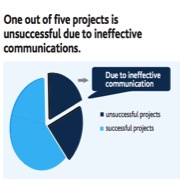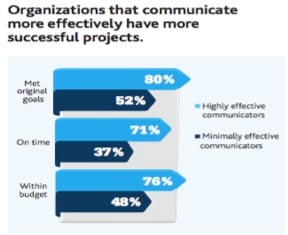The video clip linked below is from HBO’s “Silicon Valley”. This television program follows a group of software engineers as they launch an innovative app and their associated start-up company (both named Pied Piper). This clip focuses on Pied Piper’s primary competition, a tech conglomerate named “Hooli”. The clip shows a speech by Hooli’s CEO, followed by several discussions between members of a project team.
HBO’s Silicon Valley on Risk Management
This scenario highlights several instances of risk management failure which are tragically relevant to the workplace. Some of the failures I observed are lack of communication within the project team, lack of escalation within the project team and larger organization, and absence of risk planning and mitigation planning early in the project. In today’s hyper-competitive, fast-paced marketplace proper risk management is critical to project success. Has anyone observed this type of situation at their workplace?
Recently I encountered a scenario where the customer made a significant design change late in the project. The product was nearly qualified, but was deemed unacceptable due to reliability and performance requirements. The team was faced with a tough decision: kill the project or redesign.
As the contract manufacturer in this arrangement, I raised concerns regarding the potential risks this design change could have on the project. Any delay or high defect rate would result in lost revenue and profit to my organization as well as the customer. I was reassured there would be no issues and no change to the product ramp/launch dates and product cost.
As we built increasing numbers of the product the failures began to pile up. Both customer and manufacturer turned to firefighting mode and additional resources were dedicated to expedite resolution. In my customer’s organization I could see finger-pointing among several teams as each department tried to cover themselves and avoid being the next bearer of bad news to upper management.
Eventually the product was fixed and had a successful (yet slightly delayed) launch after several weeks of many stressful meetings. Could this situation have been prevented? I believe so, but only if the correct tools, controls, and planning were put in place at the beginning of the project at both the customer and manufacturer. The following article details such risk management best-practices:
Risk management and project management go hand in hand
Some noteworthy items include ingraining a risk management culture/mindset in the project team, frequently analyzing the project status and forecasting new risks, developing and agreeing to risk response plans in advance, and assigning an owner to each risk who can drive corrective actions and track progress. Although you cannot predict every possible risk in a project, I’ve seen how important it is to conduct this planning at the beginning of the project to avoid firefighting late in the project.
Does your company have a formalized process for risk management? Are these successful, or would you suggest alternate approaches? Do you have any horror stories similar to mine? Please share your experiences!









